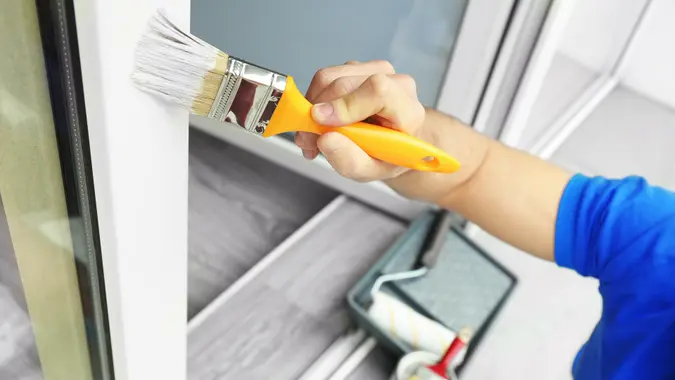I’m a Mechanic: You’ll Want To Avoid These 6 Costly Car Maintenance Mistakes

Commitment to Our Readers
GOBankingRates' editorial team is committed to bringing you unbiased reviews and information. We use data-driven methodologies to evaluate financial products and services - our reviews and ratings are not influenced by advertisers. You can read more about our editorial guidelines and our products and services review methodology.

20 Years
Helping You Live Richer

Reviewed
by Experts

Trusted by
Millions of Readers
Car owners are often shocked when minor oversights balloon into pricey repairs — sometimes costing thousands more than they ever imagined. Many people fall for outdated myths about fluids and replacement schedules, thinking these shortcuts are all that’s needed to keep their cars running longer. But that’s not the case, according to mechanic and automotive expert Alan Gelfand, owner of German Car Depot.
Gelfand said even cautious drivers overlook maintenance and warning signs that lead to unnecessary major bills. The real secret is committing to a steady maintenance routine with quality parts — this move saves vehicle owners big money over time. Gelfand revealed six costly errors most car owners make, and his advice to avoid brutal financial surprises through simple routines.
Skipping Regular Oil Changes
Skipping oil changes can quickly lead to expensive engine problems, often running five to ten thousand dollars beyond routine service costs. Gelfand strongly advised following the manufacturer’s schedule and never exceeding recommended intervals to keep engine lubrication optimal and prevent breakdowns. He said, “A $120 oil change will always beat a $10,000 engine replacement, so don’t wait until performance drops and sludge forms.”
Running on old oil means increasing engine heat and wear far faster than most owners realize, which shortens engine life dramatically. Many drivers think synthetic oil is a magic bullet, but it also degrades with time and mileage, and must be replaced regularly for peak operation.
Ignoring the Check Engine Light
“The small orange warning light on the dashboard gets ignored by many drivers until their vehicle begins to show signs of malfunction,” Gelfand said. He explained that a faulty sensor or misfire will start a chain reaction that damages either the catalytic converter or the engine. “Paying $150 today beats shelling out $2,000 or more down the road for preventable damage,” he added.
According to CarMD’s 2024 Vehicle Health Index, almost 20% of drivers drove with their check engine light on, resulting in catalytic converter replacement costs of $1,304 — that’s more than double a preventive fix. Failing to act quickly means risking domino effects across the car, with electrical and fuel systems often next in line to fail.
Not Maintaining Tires Properly
Underinflated or worn tires are a double risk, hurting both safety and costing extra in fuel and suspension repairs. Gelfand called tire care the most neglected routine, warning that a blowout can quickly lead to hundreds or thousands in damage. Besides fuel and ride comfort, poor tire maintenance also speeds up brake and suspension wear, which are much costlier to repair than buying new tires.
A small investment in regular checks and timely rotations helps prevent everything from alignment issues to total transmission collapse over time. Gelfand recommended regular monthly pressure checks, rotations every 5,000 to 7,000 miles, and replacing low tread.
Delaying Brake Service
According to Consumer Reports, 40% of drivers postpone crucial car maintenance like brakes, risking their safety and facing larger, costlier repairs down the road. Gelfand said a $300 pad replacement is far less painful than facing $1,500 or more just because symptoms were dismissed until too late. Listen for squealing or longer stopping distances, and don’t skip timely service for maximum savings.
Regular checks prevent both accidents and runaway expenses, as simple proactive service lowers repair costs for braking systems more than almost anything else. Routine maintenance here makes a dramatic difference in both safety and costs.
Neglecting the Cooling System
Skipping coolant flushes is a fast track to expensive engine block repairs, with corrosion destroying the radiator and water pump over time. Gelfand explained that a simple coolant change every few years — costing far less — will prevent an overheating event that could mean replacing the entire engine for $6,000. People often forget coolant, but it’s a key part of keeping both costs and breakdowns far from your repair budget.
Routine maintenance for the cooling system means scheduling flushes and paying attention to aging fluids to prevent unexpected breakdowns.
Using Cheap or Incorrect Parts
Choosing bargain filters, brakes or sensors almost always ends up costing more, as poor fit and material cause early system failures. Gelfand strongly suggested sticking with OEM or trusted aftermarket parts, since incorrect components void warranties and can create up to $2,000 in surprise repairs if systems are damaged. The temptation to save upfront rarely works, but quality parts are key to durability and long-term peace of mind.
Certified shops and manufacturer-approved parts always offer better performance, fewer repairs and stronger guarantees, according to German Car Depot and other experts.
More From GOBankingRates
 Written by
Written by  Edited by
Edited by 

























